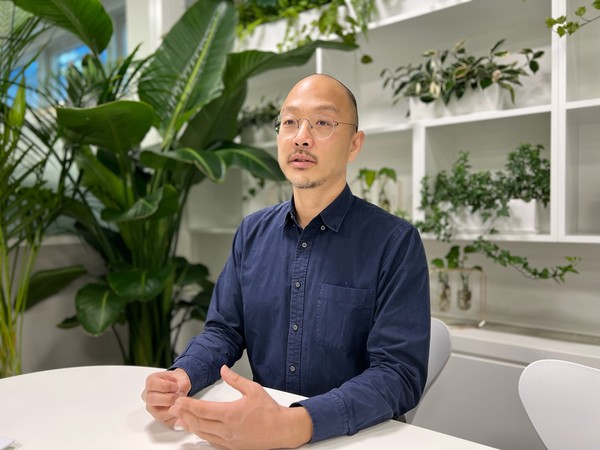Lately, many cancer therapeutic companies have been focusing their efforts on developing antibody drug conjugates (ADCs) or targeted protein degraders (TPDs).
However, Orum Therapeutics is exploring their combination through the company’s dual precision targeted protein degraders (TPD2) platform to increase safety and efficacy for specific cancer targets, the company said.

Korea Biomedical Review met with Orum Therapeutics CEO Lee Sung-joo on Friday to ask about his company’s novel cancer therapeutic platform and promising emerging pipelines.
“We’re proud to say that we’re the first in the world to deliver a TPD on an antibody in a clinical setting,” said Lee.
Lee began his drug discovery career at LG Life Sciences. He then led the APAC R&D team at Sanofi, discovering drugs for Asian diseases like liver cancer or HPV and subsequently left to establish Orum Therapeutics because of his fascination with undruggable targets.
“I thought that using antibodies could help solve undruggable targets especially for cancer," he explained. “However, we realized that many of these targets are undruggable by antibodies or small molecules because there is no pocket for small molecules to bind to targets or sometimes antibodies can bind to targets but become difficult to access as they're located inside the cell.”
Lee founded Orum Therapeutics in Daejeon in 2016. Three years later, the company expanded to Boston to diversify the talent pool.
“From the beginning, I had a vision to grow Orum into a global biotech and recruited individuals with a global mindset in terms of communication and science,” he said.
Operating in the U.S. and Korea, the Daejeon lab performs the antibody discovery and engineering, and in silico modelling while the Boston lab does antibody conjugation, chemistry and other areas of research and development.
Delving into his company’s unique TPD2 technology, he explained that the goal is to make safer and more effective drugs by fusing the strengths of the two different platforms, TPDs and ADCs. While ADCs are highly targeted drugs for specific receptors on cells like CD33, they deliver very toxic payloads but don’t always distinguish well between normal and tumor cells.
TPDs on the other hand are also very powerful modalities that can eliminate the target protein of interest. For example, one degrader can basically degrade multiple target proteins belonging to cancer but the caveat is that a degrader is administered systemically -throughout the entire body- degrading that particular protein of interest everywhere in your body.
“That's where the toxic risk becomes a little bit concerning,” Lee acknowledged. “Therefore, our idea was to marry both concepts by placing a TPD on an ADC so the antibody will better launch the TPDs into cancer cells for improved efficacy and safety in the same molecule.”
He pointed out, “While we are not the only company using TPD technology, almost all of our competitors have a small molecule approach so they cannot specifically deliver their degrader into specific cell types like we do with antibodies.”
Some TPD companies are trying to combine cancer specific E3 ubiquitin ligases with TPDs to reduce the toxicity of TPDs but this approach is still in the discovery stages and is not as specific as our antibodies, he went on to say.
“Although we’re focused on oncology, our TPD2 platform itself is agnostic to several therapeutic areas. For non-oncology indications, we could work with a partner who specializes in other areas to deliver TPD into a particular type of immune cell for immune-based diseases or immuno-oncology," Lee said. “We envision our TPD drugs to be used as a stand-alone therapy because the molecule itself is a combination of an antibody and TPD.”
Currently, Orum is conducting a phase 1 study of the investigational ORM-5029 in patients with HER2-expressing advanced solid tumors in the U.S.
Elaborating on other pipelines of the company, he explained. “The combination of TPD targets and ADC targets covers an infinite discovery space that could potentially be very exciting. Being the first in the world to place this kind of drug into clinical trials, puts us in a leadership position where we can collaborate with partners that bring us different antibodies or degraders which we can combine with our platform’s technology."
When asked to comment on the differences between the U.S. and Korean markets regarding regulatory affairs and clinical trials, he replied, “I can’t compare both agencies because we only have experience with the FDA as our CMO and regulatory team are based in the U.S. but as the company grows, we will expand to other Asian countries like Korea.”
However, he emphasized that both the Korean Ministry of Food and Drug Safety and the U.S. FDA are part of the International Council for Harmonization of Technical Requirements for Pharmaceuticals for Human Use (ICH) so the regulatory aspects were globalized.
“It’s really just a strategic choice based on where you want to collect clinical data,” he said.
Regarding future IPO plans for the company, Orum CEO explained that the company is currently supported by private investors in Korea.
“We plan to go public but it's not it's not our immediate focus as we view the IPO as a stepping stone for the company’s growth but not the end goal and also depends on market conditions.”
However, immediately, the company plans to file the investigational new drug (IND) for ORM-6151, a GSPT1 degrader on a CD33 antibody to present at the American Society for Hematology (ASH) next month for its acute myeloid leukemia indication (AML).
Overall, Orum is keenly interested in developing very differentiated TPD payloads using antibodies as the core of its work in oncology, Lee said.
“We would also like to apply this platform for other indications but want to optimize our resources to do one thing very well first and for us that’s fusing ADCs and TPD in oncology.”

